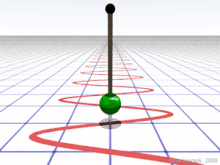Frequency
Frequency refers to the number of pulses delivered per second during PEMF therapy. It is a critical factor in determining the therapeutic effects of the […]
Frequency refers to the number of pulses delivered per second during PEMF therapy. It is a critical factor in determining the therapeutic effects of the treatment. Different frequencies can target specific health conditions; for example, lower frequencies may promote relaxation and general wellness, while higher frequencies might be more effective for pain relief or tissue repair.
Frequency (symbol f), most often measured in hertz (symbol: Hz), is the number of occurrences of a repeating event per unit of time. It is also occasionally referred to as temporal frequency for clarity and to distinguish it from spatial frequency. Ordinary frequency is related to angular frequency (symbol ω, with SI unit radian per second) by a factor of 2π. The period (symbol T) is the interval of time between events, so the period is the reciprocal of the frequency: T = 1/f.
| Frequency | |
|---|---|
 | |
Common symbols | f, ν |
| SI unit | hertz (Hz) |
Other units |
|
| In SI base units | s−1 |
Derivations from other quantities |
|
| Dimension | |
Frequency is an important parameter used in science and engineering to specify the rate of oscillatory and vibratory phenomena, such as mechanical vibrations, audio signals (sound), radio waves, and light.
For example, if a heart beats at a frequency of 120 times per minute (2 hertz), the period—the interval between beats—is half a second (60 seconds divided by 120 beats).
